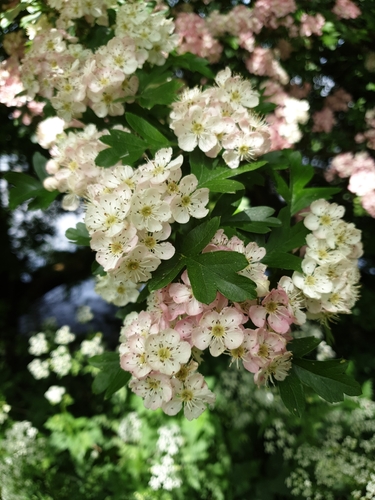|
| Common Animals Fish Mushrooms Flora |
Crataegus monogyna |
http://en.wikipedia.org/wiki/Crataegus_monogyna
https://en.wikipedia.org/wiki/Crataegus_Г—_media
https://en.wikipedia.org/wiki/Crataegus_Г—_sinaica
https://en.wikipedia.org/wiki/Crata
June: Fruit sets, shoots continue to grow.
In folk medicine, hawthorn fruits are used to strengthen heart and vessels Used in rituals and ceremonies symbolizing protection and health
Low shrub with thorny branches Fruits red, round, with a single seed inside
Grows at forest edges, gardens, and parks Fruits (haws) harvested in autumn after full ripening
Collect fruits after first frosts when sweeter Harvest carefully to avoid sharp thorns
Fruits eaten fresh, dried, or processed into tinctures and jams Seeds inside fruits are toxic and should be removed before use
Fruit: Red, sweet-sour, fleshy
Leaves: Rarely used, sometimes for teas
Flowers: Fragrant, used in folk medicine
Leaves: Rarely used, sometimes for teas
Flowers: Fragrant, used in folk medicine
Hawthorn Jam (Boiling)
Thick with rich flavor
Thick with rich flavor
1. Wash fruits and remove seeds.
2. Boil with sugar for 30–40 minutes until thickened.
3. Pour into jars and store cool.
2. Boil with sugar for 30–40 minutes until thickened.
3. Pour into jars and store cool.
Hawthorn Tincture (Infusion)
Tonic and cardioprotective
Tonic and cardioprotective
1. Soak fruits in vodka for 2–3 weeks.
2. Strain and take 20 ml twice daily.
3. Store in a cool dark place.
2. Strain and take 20 ml twice daily.
3. Store in a cool dark place.
Hawthorn Flower Tea (Brewing)
Calming with light aroma
Calming with light aroma
1. Pour boiling water over dried flowers.
2. Steep for 10 minutes, strain.
3. Drink warm plain or with honey.
2. Steep for 10 minutes, strain.
3. Drink warm plain or with honey.
Hawthorn Fruit Puree (Mashing)
Used as dessert and sauce additive
Used as dessert and sauce additive
1. Cook fruits until soft and mash.
2. Add sugar if desired.
3. Use fresh or freeze.
2. Add sugar if desired.
3. Use fresh or freeze.
 Turkey · Antalya · Kemer
Turkey · Antalya · Kemer





